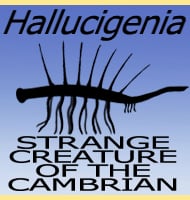Ovatiovermis
In Depth Ovatiovermis is loosely termed a naked lobopodian, this is because the body of this creature was soft and not covered in armoured plates. Lobopodians like Ovatiovermis are so called because their limbs, called lobopods, are fleshy tube like appendages. Ovatiovermis had nine pairs of these lobopods, arranged into three distinct groups. The first … Read more
